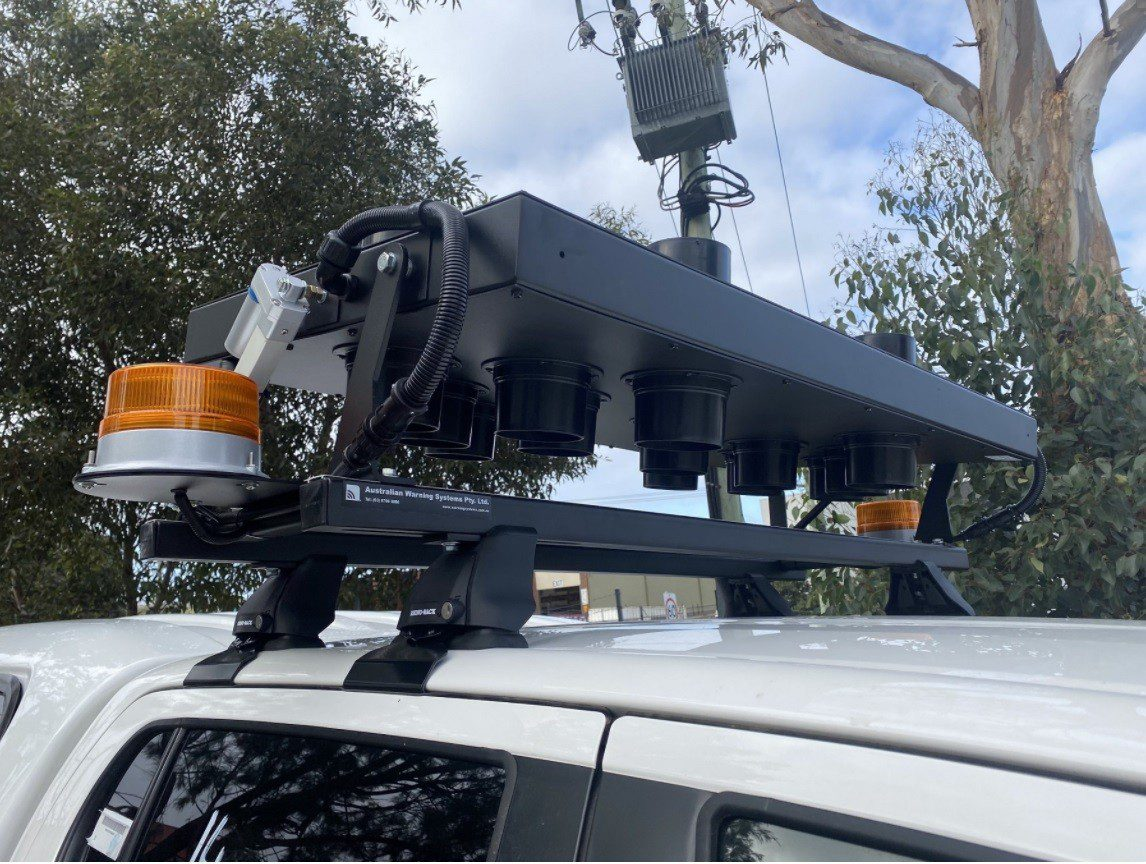Squawker reverse alarms explained
A reversing vehicle is a serious safety hazard to surrounding road users. Legally required on most heavy vehicles, backup alarms alert nearby pedestrians and other drivers whenever you are reversing so that they can stay out of harm’s way.
Need this type of alert system for your emergency vehicle?
Squawker reversing alarms are the latest evolution in audible warning devices. They emit white sound that dissipates rapidly beyond the danger zone, minimising disruption and noise complaints from the wider community.
Here, we explain what a squawker reversing alarm is, why it’s a superior safety solution for all kinds of vehicles and how to install it. Keep reading to learn about its key features, applications and advantages for your fleet.
This is a general guide only and is not intended as legal advice. If required, please consult a legal professional for personalised guidance before buying and using a squawker reverse alarm.
What is a squawker reverse alarm?
A squawker reverse alarm, also known as a broadband reversing alarm, squawker or quacker, produces a ‘pshh-pshh-pshh’ sound over a range of frequencies when the vehicle is backing up.
This beam of noise is considerably louder in a certain direction, so it can boost safety within the hazard zone while reducing noise pollution in other areas. It may also feature a spoken warning to state whether the vehicle is turning.
Suitable for a variety of heavy-duty applications, squawker alarms are often used in emergency vehicles, utes, vans, trucks, buses, coaches, cars and machinery.
Advantages of a squawker alarm
Traditionally, tonal alarms, recognised by their repetitive beep sound, have been the most common type of back-up alarm.
However, these devices have several drawbacks, including:
- It can be difficult to pinpoint the sound’s location
- Over time, the familiar frequency is often ignored
- Risk of hearing damage to people in the vicinity
- The beeps add to noise pollution
The good news?
Recent technological advancements have addressed these limitations to help prevent onsite accidents involving reversing vehicles.
Here are the main environmental and safety benefits of squawker reverse alarms over tonal alarms:
Confined warnings
Traditional tonal alarms can generally be heard up to thirty times beyond the hazard zone. This distance poses a significant safety risk to onsite personnel.
When workers hear an alert frequently, they become desensitised to its sound – over-familiarity that can encourage slow responses in the face of danger.
Conversely, squawkers confine an alert to the precise area at risk. The noise is directed only into the hazard zone, making the alarm more effective and less likely to be ignored.
In short, only those in danger will hear the alarm, making it a groundbreaking innovation in vehicle safety.
Fewer noise complaints
The beeping of traditional tonal alarms can be very annoying, particularly during early mornings or late at night when people are trying to sleep.
A reverse squawker alarm offers a more ear-friendly alternative while still being just as effective. Its sound dissipates twice as fast as a pure tone, preventing it from carrying far and minimising noise pollution for those not in the immediate vicinity.
Ultimately, that means neighbours are less likely to make a noise complaint.
These alarms can also adjust their volume automatically based on surrounding noise levels, typically ranging from 77 to 97 dB. This ensures the alert is only as loud as needed.
Wide frequency range
These reversing alarms rely on a wide range of broadband frequencies. As a result, you can adjust the sound of this alarm for various environments and hearing abilities.
Moreover, as no tonal penalty is applied, it’s easier to respect environmental noise limits. The white noise can function 5-decibels quieter than a traditional tonal alarm, without compromising on its alert’s efficacy.
Directional alerts
Anyone in the danger zone, i.e. behind the reversing vehicle, will hear this alarm clearly and instantly recognise its warning, even on busy sites with plenty of background noise.
That’s because broadband frequencies provide a directional beam of sound. This enables listeners to immediately locate where the alarm is coming from – and take safety measures as soon as possible.
How to install a squawker reverse alarm
These reversing alarms are relatively easy to install, as they tend to be a standard size. That means they can often be directly swapped with the vehicle’s original alarm.
As squawkers generate the loudest noise in one direction, they must be fitted with an unobstructed view facing backwards from the vehicle. That way, the alarm will be heard clearly by other road users behind the vehicle when it is backing up.
Importantly, an alarm should always be installed by a qualified technician to ensure it operates effectively.
This professional will connect the unit to your reverse lights’ positive wire and ground, before mounting it as per manufacturer instructions.
At Australian Warning Systems, we install reversing alarms on a range of different vehicle types. Discover customised solutions that suit your needs and abide by state and government regulations.
Shop squawker alarms for emergency vehicles
Sending out audible alerts via broadband frequencies, squawkers are favoured for their superior clarity, simple setup and minimal noise pollution.
Time to buy a reliable reversing alarm?
Get the optimal solution for your emergency vehicle with Australian Warning Systems. We ensure every squawker reverse alarm has been designed and manufactured to meet the highest standards of safety, performance and durability.
Explore our full range of vehicle safety alarms and get a quote online.
For more information, call our expert team at 03 9796 5880 or email us at info@warningsystems.com.au. We ship reversing alarms Australia-wide.



